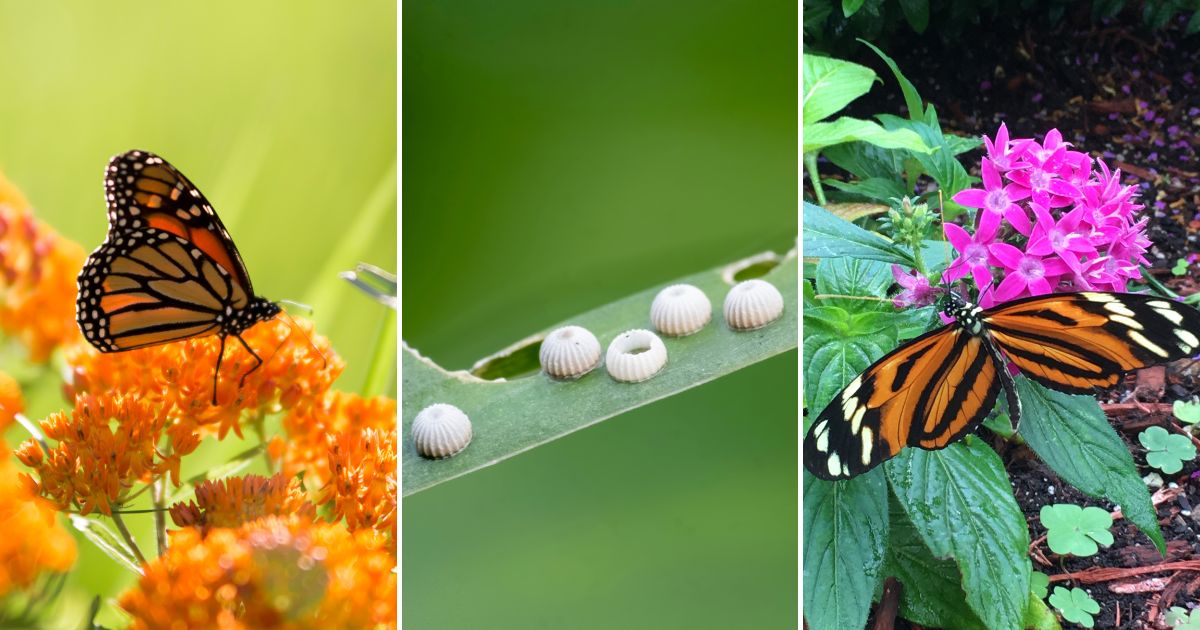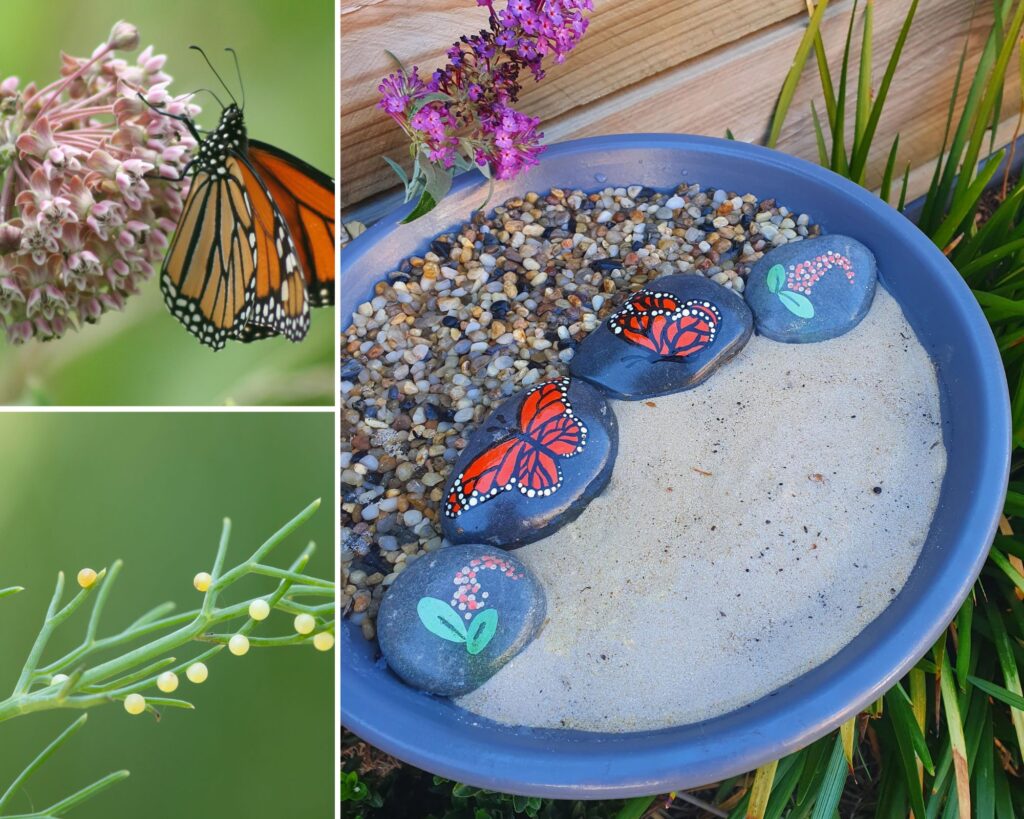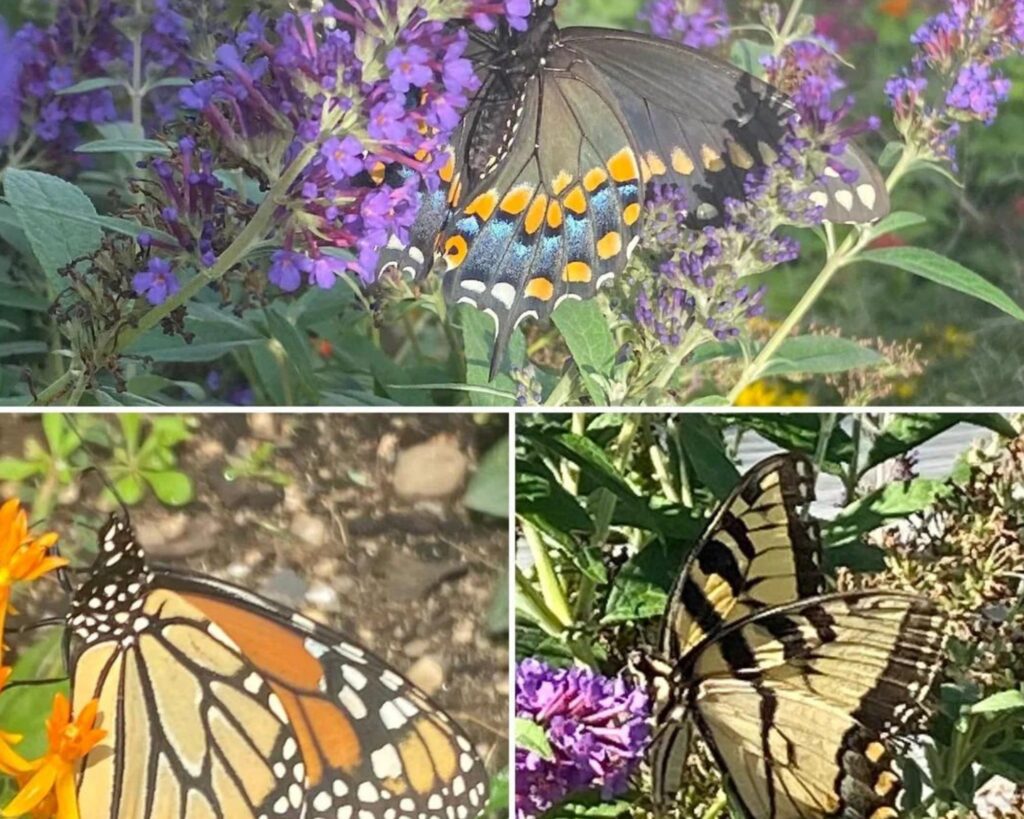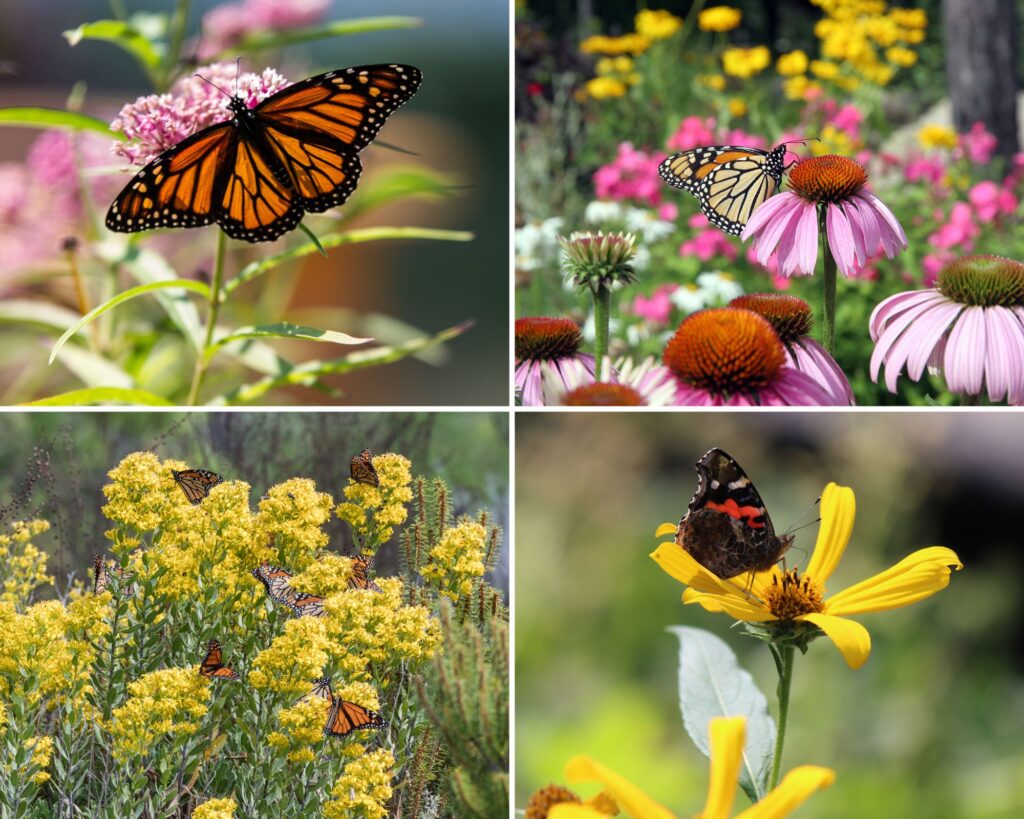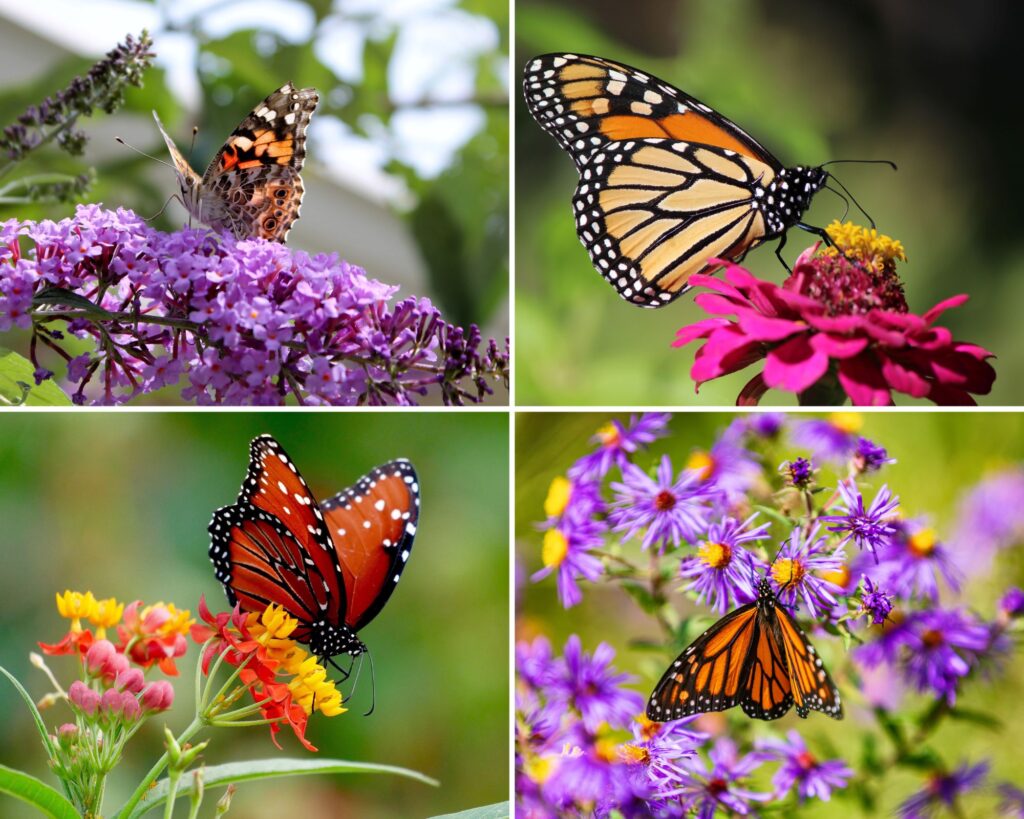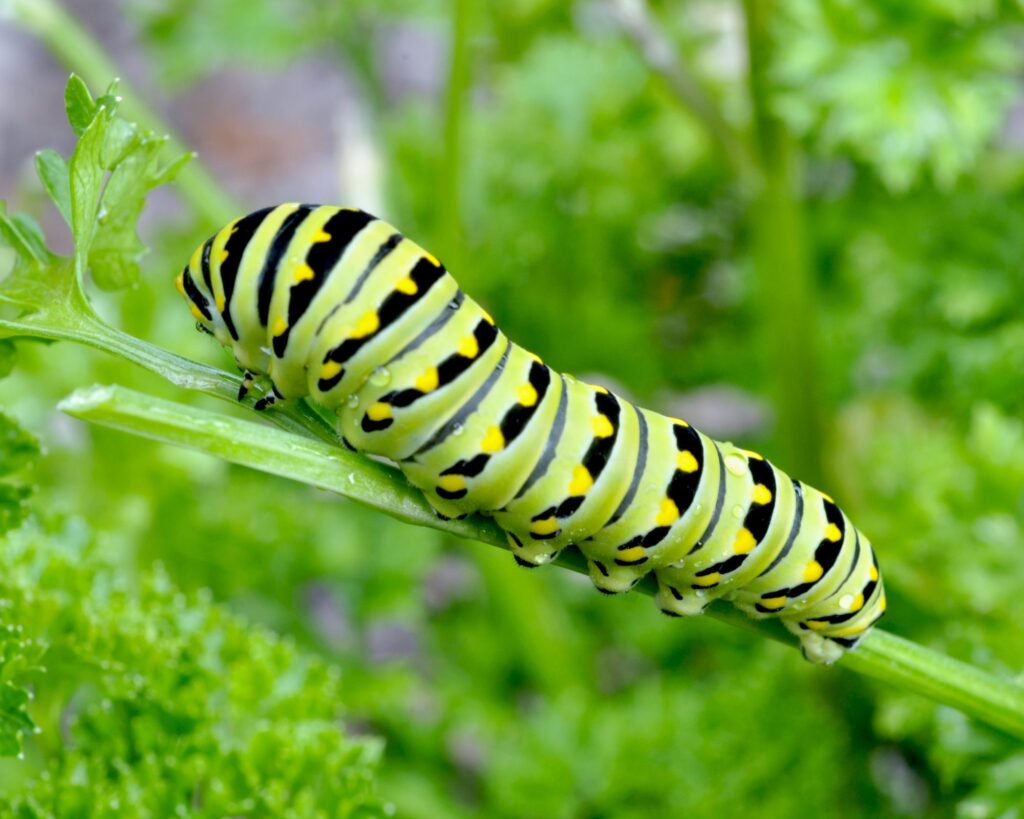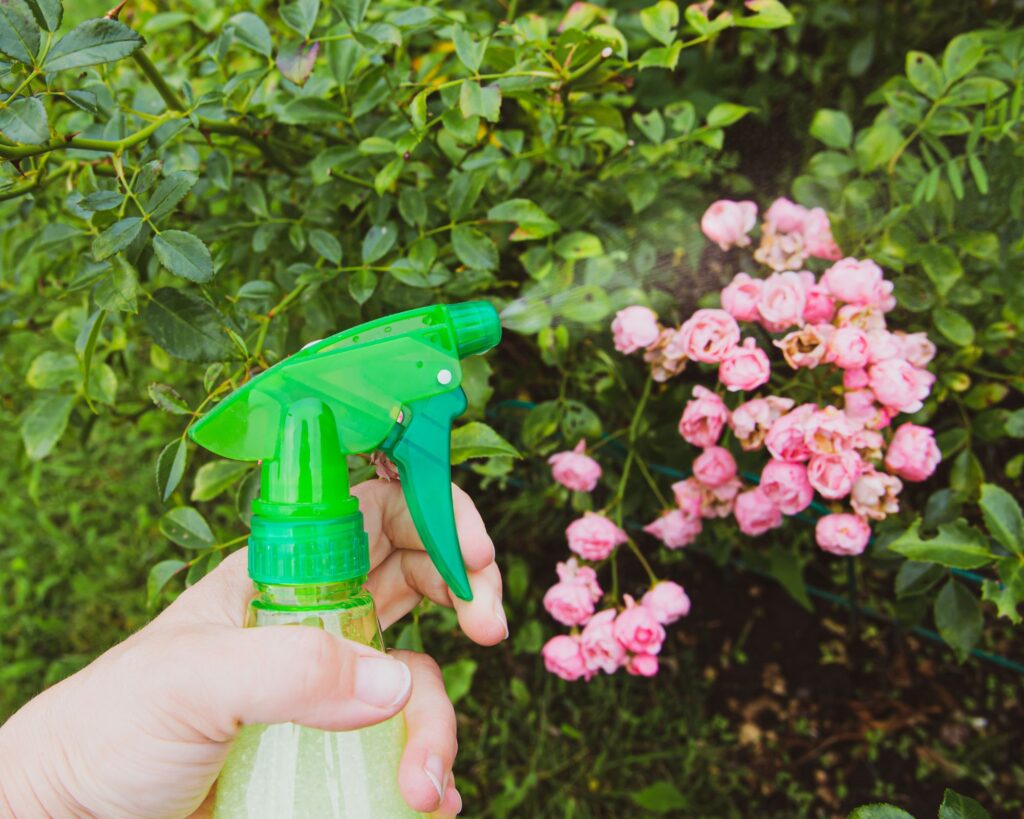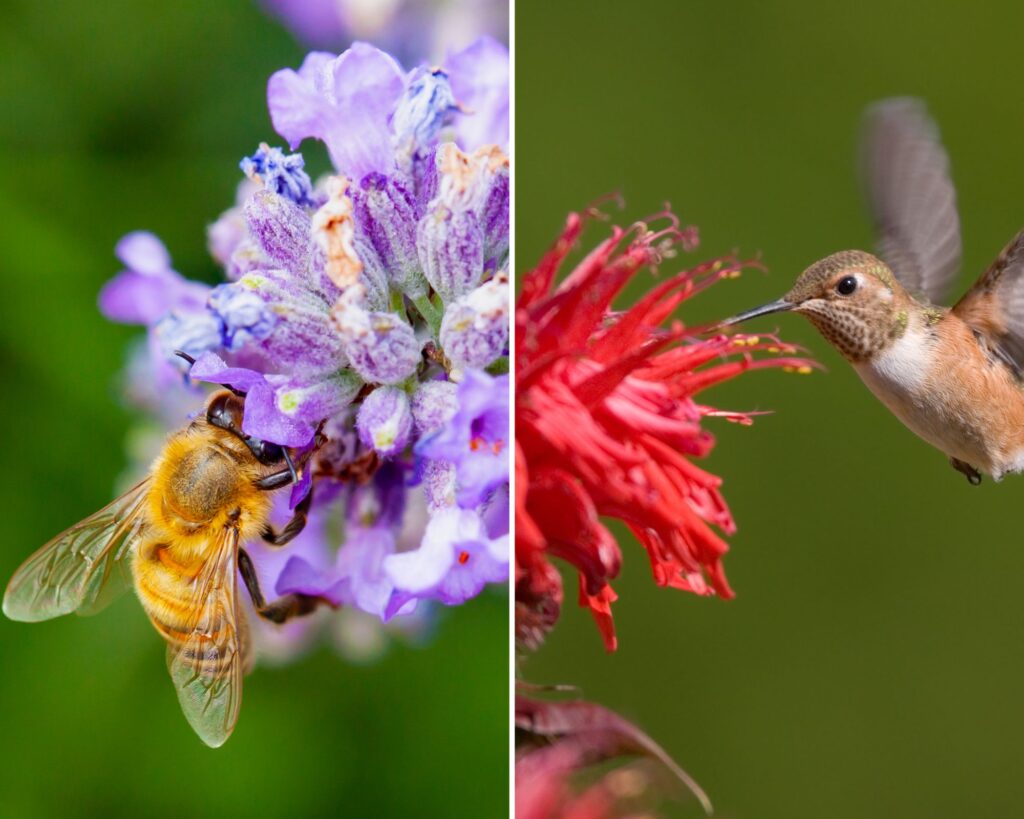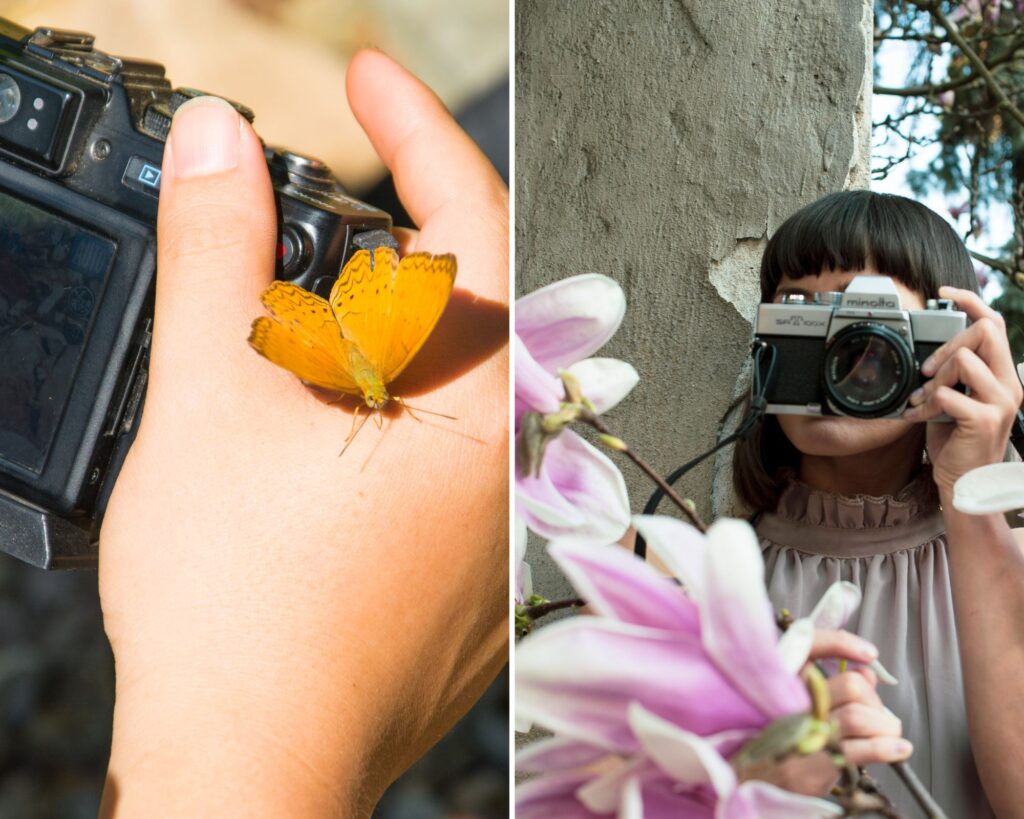Imagine your garden alive with vibrant butterflies, each flitting from bloom to bloom. Creating a butterfly garden isn’t just beautiful – it supports pollinators and adds life to your space.
With the right plants like milkweed and butterfly bush, even a small area can become a sanctuary.
Add host plants, and you’ll not only attract butterflies but nurture their next generation. Ready to transform your garden into a thriving butterfly haven? Let’s dive in.
Understanding Butterfly Habitats
To create a captivating butterfly garden, focus on providing suitable habitats, choosing optimal locations, and designing an inviting garden layout. Here are the key elements to help you succeed.
Butterflies are attracted to areas that offer food, water, and shelter. Host plants like milkweed, dill, and fennel provide places for butterflies to lay eggs. Nectar-producing flowers such as coneflowers and lantanas are essential for feeding adult butterflies.
A reliable water source is also important. You can create puddling stations using shallow dishes filled with water and sand. Ensure your garden has sunny spots with some shade for butterflies to regulate their body temperature.
Remember to minimize pesticide use to maintain a safe environment for butterflies and caterpillars.
Designing the Perfect Butterfly Garden: Location and Layout Tips
Choose a sunny, sheltered spot for your butterfly garden with 6-8 hours of sunlight to keep butterflies warm and active.
Placing your garden near other flowering plants creates a more attractive pollinator oasis, and keeping it accessible ensures easy maintenance.
A visible location allows you to enjoy watching butterflies up close. Plan your garden layout with plants that bloom in different seasons, ensuring a continuous food supply. Include both nectar and host plants to support butterflies at every life stage.
Grouping plants in clusters creates vibrant, recognizable patches. Adding pathways and seating lets you observe without disturbance, while native plants and decorative elements like rocks provide essential shelter and charm.
Thoughtful planning will transform your garden into a flourishing butterfly haven.
Selecting Butterfly-Friendly Plants
Creating a butterfly garden involves choosing the right plants that provide nectar for adult butterflies and host plants for their caterpillars to feed on. Native species often offer the best support for local butterfly populations.
Using native plants is one of the best ways to attract butterflies. These plants are adapted to the local climate and soil, making them easier to grow and maintain. They also provide the specific nectar and foliage that local butterflies need.
In North America, milkweed is a crucial native plant, especially for monarch butterflies. Other examples include coneflower, black-eyed Susan, and goldenrod.
When selecting native species, consult local plant nurseries or extension services for recommendations.
Being mindful of the bloom times of native plants is also essential. Choose a variety of plants that bloom at different times to provide a continuous source of nectar throughout the growing season.
Nectar-Rich Blooms
Butterflies are drawn to flowers that are rich in nectar. Flowers should be chosen for their color, scent, and the shape that makes them accessible to butterflies.
Brightly colored flowers such as purple, red, and yellow are particularly attractive. Examples include butterfly bush, zinnias, and lantanas.
Additionally, flat-topped flowers provide a landing pad for butterflies to rest and feed.
Clustering these nectar plants together can create a more effective feeding ground. Regular deadheading of spent flowers can encourage more blooms and extend the nectar availability for butterflies.
Host Plants for Caterpillars
Host plants are necessary for butterfly reproduction. Caterpillars have specific plants they rely on for food. Without these host plants, butterflies will not lay eggs in your garden.
For example, the monarch butterfly relies on the milkweed plant for its larvae. Black swallowtails are attracted to plants in the carrot family, such as dill and parsley.
Planting an abundance of host plants can support multiple generations of butterflies.
Remember that caterpillars will eat these plants, so expect some leaves to look chewed. This is a sign of a healthy butterfly garden.
Pesticide-Free Practices
Maintaining your butterfly garden ensures it remains a haven for pollinators. Pay special attention to pesticide-free practices and seasonal care to create a sustainable environment.
Using pesticides can harm pollinators. Opt for natural pest control methods like introducing beneficial insects, such as ladybugs, which eat aphids.
Another method is using neem oil or insecticidal soap for mild infestations; these are less harmful to butterflies and bees.
Hand-picking pests off plants is effective for small gardens. You can also use barriers, like nets or row covers, to keep pests away while still allowing pollinators to access the plants.
Crop rotation within your garden can minimize pest buildup, making it harder for pests to survive year-round. Always check for product labels, ensuring any treatments used are safe for pollinators.
Seasonal Care Tips
Seasonal care includes adapting your garden maintenance to meet the changing needs of plants and pollinators. In spring, clean out dead plant matter, which can harbor pests or diseases.
Adding mulch can help retain moisture and regulate soil temperature.
Summer requires frequent watering, especially during dry spells. Trim back overgrown plants to encourage new growth and provide more nectar sources.
Provide a shallow water source for butterflies to drink from, like a small dish with pebbles.
In autumn, leave some leaf litter and plant stalks to provide winter habitats. Avoid heavy pruning as some insects, like butterfly larvae, may overwinter on the plants.
Winter care involves minimal intervention. Focus on ensuring that plant roots are protected from extreme cold by mulching.
Checking for frost damage periodically helps to maintain plant health for the next growing season.
Attracting a Diversity of Pollinators
To create a thriving butterfly garden, it’s important to consider other pollinators like bees and birds, as well as provide essential elements like water sources and shelter.
Bees are crucial for pollination. Plant flowers like lavender, bee balm, and coneflower to attract them.
Birds also contribute to pollination. Hummingbirds, for instance, are attracted to trumpet vine and bee balm. Use native plants whenever possible, as they fit the local ecosystem better.
Pollinators need water for hydration and cooling. Small, shallow dishes filled with stones and water enable insects like butterflies and bees to drink without drowning.
Bird baths also serve a dual purpose by attracting birds who may help with garden pest control.
Providing shelter can be as simple as leaving a small pile of sticks or rocks, which can become homes for insects. Planting dense shrubs or leaving patches of tall grass offer birds places to nest.
By ensuring these elements are present, your garden becomes a welcoming haven for a diversity of pollinators.
Observation Tips
Spend time in your garden during warm, sunny days when butterflies are most active. Early afternoon is often the best time for observation.
Approach slowly and avoid sudden movements. Butterflies are sensitive to vibrations and may quickly fly away.
Use a field guide to identify different species in your garden. Several apps and online resources can also help you with quick identification.
Consider setting up a comfortable spot with a chair or bench where you can sit quietly. This allows you to watch the butterflies without disturbing them.
Keep a journal to note down your observations. Record dates, times, and types of butterflies seen to understand patterns and seasonal variations.
Adding a water source like a shallow dish with pebbles can attract butterflies, offering more opportunities for observation.
Photographing Your Visitors
Use a camera with a good zoom lens to capture detailed images without getting too close and scaring the butterflies away.
Photograph butterflies when they are resting on flowers or leaves. Early morning can be an excellent time since they are less active while warming up.
Pay attention to lighting. Natural light works best, so try to photograph during the golden hours – shortly after sunrise and just before sunset.
Experiment with different angles. Capturing the butterfly’s wings open and closed can provide a variety of interesting shots.
Use a fast shutter speed to capture quick movements. If you’re using a smartphone, consider enabling burst mode to take multiple photos in quick succession.
Editing apps can enhance your photos by adjusting brightness, contrast, and saturation for a polished final image. Sharing your photos on social media or a personal blog can inspire others to start their own butterfly gardens.
Creating a butterfly garden is a magical way to transform your outdoor space and make a meaningful impact on the environment.
Not only will your garden become a visual delight, but it will also flourish into a thriving ecosystem, attracting a diverse array of pollinators, including bees and birds.
With a bit of effort and dedication, your garden can evolve into a sustainable sanctuary, supporting the conservation of these vital pollinators while offering you endless beauty and satisfaction.
